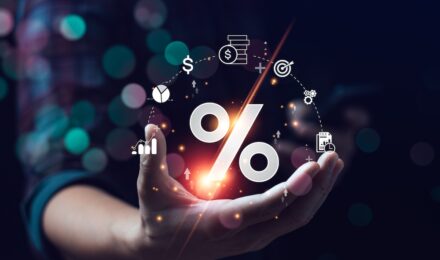Fintech has already transformed the borrowing experience, making it faster, more transparent, and more accessible. What once required bank visits and weeks of paperwork can now be handled on a smartphone in minutes. In 2025, the pace of change is accelerating. Borrowers are entering an era where lending is defined by advanced technology, personalized terms, and new forms of risk assessment.
Artificial Intelligence In Underwriting
Artificial intelligence is moving from a supporting role to the center of lending decisions. Algorithms now evaluate not just credit scores but a wide range of data points, including income flows, spending habits, and payment histories. This allows lenders to approve borrowers with limited or unconventional credit backgrounds. The trend is especially helpful for younger borrowers, freelancers, and gig workers who might otherwise struggle to qualify under traditional models.
Alternative Data Expanding Access
Beyond AI, the use of alternative data is making borrowing more inclusive. Rent payments, utility bills, and digital wallet activity are increasingly part of lending assessments. This shift helps people with “thin” credit files demonstrate their reliability. By broadening the definition of creditworthiness, fintech firms are bridging gaps that banks have long overlooked.
Embedded Lending
Another trend gaining traction is embedded lending—the integration of financing directly into everyday platforms. For example, small businesses can access loans through e-commerce platforms, while consumers may see instant financing offers at checkout. This seamless integration reduces friction and makes borrowing feel like a natural extension of existing transactions.
Real-Time Loan Management
Borrowers now expect more control over their loans. Fintech apps allow users to track balances, adjust repayment schedules, and make extra payments in real time. Some platforms even offer dynamic repayment plans that shift based on a borrower’s income patterns. The flexibility is especially attractive in uncertain economic conditions, where steady repayment may otherwise be challenging.
Regulation Catching Up
As fintech lending expands, regulators are working to keep pace. Transparency requirements, caps on certain fees, and stricter data privacy rules are being introduced to protect consumers. While some lenders see regulation as a hurdle, it ultimately builds trust in the market. Borrowers can expect clearer disclosures and stronger safeguards in the years ahead.
The Role Of Blockchain And Digital Identity
Blockchain technology and digital identity verification are poised to strengthen security and streamline lending. By creating tamper-proof records and faster identity checks, these tools reduce fraud while speeding up approvals. Though still in early stages, their adoption signals a future where loan processing becomes even more efficient and secure.
Impact On Borrowers
For borrowers, these developments mean more options and a more tailored experience. People with limited credit histories will find new doors opening, while established borrowers will benefit from faster, more flexible products. The flip side is complexity—borrowers must stay informed to avoid high-cost products disguised by convenience.
Final Thoughts
The future of fintech lending promises greater accessibility, speed, and personalization. With AI-driven underwriting, alternative data, and embedded lending shaping the market, borrowers can expect a lending environment unlike anything seen before. The challenge is to balance opportunity with caution, taking advantage of new tools while staying mindful of costs and long-term commitments.
References
- World Economic Forum — “The Future Of Fintech And Financial Inclusion”: https://www.weforum.org
- Forbes — “Fintech Trends In 2025: What To Watch”: https://www.forbes.com
- Consumer Financial Protection Bureau — “Emerging Data Practices In Lending”: https://www.consumerfinance.gov
Fintech has already transformed the borrowing experience, making it faster, more transparent, and more accessible. What once required bank visits and weeks of paperwork can now be handled on a smartphone in minutes. In 2025, the pace of change is accelerating. Borrowers are entering an era where lending is defined by advanced technology, personalized terms, and new forms of risk assessment.
Artificial Intelligence In Underwriting
Artificial intelligence is moving from a supporting role to the center of lending decisions. Algorithms now evaluate not just credit scores but a wide range of data points, including income flows, spending habits, and payment histories. This allows lenders to approve borrowers with limited or unconventional credit backgrounds. The trend is especially helpful for younger borrowers, freelancers, and gig workers who might otherwise struggle to qualify under traditional models.
Alternative Data Expanding Access
Beyond AI, the use of alternative data is making borrowing more inclusive. Rent payments, utility bills, and digital wallet activity are increasingly part of lending assessments. This shift helps people with “thin” credit files demonstrate their reliability. By broadening the definition of creditworthiness, fintech firms are bridging gaps that banks have long overlooked.
Embedded Lending
Another trend gaining traction is embedded lending—the integration of financing directly into everyday platforms. For example, small businesses can access loans through e-commerce platforms, while consumers may see instant financing offers at checkout. This seamless integration reduces friction and makes borrowing feel like a natural extension of existing transactions.
Real-Time Loan Management
Borrowers now expect more control over their loans. Fintech apps allow users to track balances, adjust repayment schedules, and make extra payments in real time. Some platforms even offer dynamic repayment plans that shift based on a borrower’s income patterns. The flexibility is especially attractive in uncertain economic conditions, where steady repayment may otherwise be challenging.
Regulation Catching Up
As fintech lending expands, regulators are working to keep pace. Transparency requirements, caps on certain fees, and stricter data privacy rules are being introduced to protect consumers. While some lenders see regulation as a hurdle, it ultimately builds trust in the market. Borrowers can expect clearer disclosures and stronger safeguards in the years ahead.
The Role Of Blockchain And Digital Identity
Blockchain technology and digital identity verification are poised to strengthen security and streamline lending. By creating tamper-proof records and faster identity checks, these tools reduce fraud while speeding up approvals. Though still in early stages, their adoption signals a future where loan processing becomes even more efficient and secure.
Impact On Borrowers
For borrowers, these developments mean more options and a more tailored experience. People with limited credit histories will find new doors opening, while established borrowers will benefit from faster, more flexible products. The flip side is complexity—borrowers must stay informed to avoid high-cost products disguised by convenience.
Final Thoughts
The future of fintech lending promises greater accessibility, speed, and personalization. With AI-driven underwriting, alternative data, and embedded lending shaping the market, borrowers can expect a lending environment unlike anything seen before. The challenge is to balance opportunity with caution, taking advantage of new tools while staying mindful of costs and long-term commitments.
References
- World Economic Forum — “The Future Of Fintech And Financial Inclusion”: https://www.weforum.org
- Forbes — “Fintech Trends In 2025: What To Watch”: https://www.forbes.com
- Consumer Financial Protection Bureau — “Emerging Data Practices In Lending”: https://www.consumerfinance.gov







